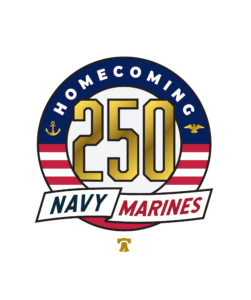The sloop Providence was originally named Katy and was one of a fleet of ships owned by John Brown of Providence, Rhode Island. Records of the ship’s voyages start in 1769 and show that Katy was used as a merchant ship, privateer, and whaler in its early years. The sloop’s style was a common one in Rhode Island, featuring a fore-and-aft rigging style that allowed the ship to sail closer to the wind than square-rigged ships, which made her faster and more maneuverable. This appealed to both traders and pirates.
In June 1775, Katy became the flagship of the tiny Rhode Island Navy, created to protect the interests of Rhode Island merchants against British naval captains. These captains were aggressively enforcing British tax laws that fell heavily on the maritime trade that made up a large portion of the Rhode Island economy. Realizing that their two-ship navy could never truly protect their interests, in August the General Assembly requested that Rhode Island’s representatives in the Continental Congress initiate legislation calling for the formation of a Continental Navy.
After a great deal of debate, on October 13th, 1775, legislation was passed authorizing the purchase of Katy and another ship to serve as the first ships of a new Continental Navy. The passage of this legislation is why October 13th is still celebrated as the birthday of the U.S. Navy today.
As Katy was on another mission at the time, four other ships were commissioned before Katy arrived in Philadelphia to be refitted for service. When the ship was commissioned, it was renamed Providence in honor both of its city of origin and the fact that all the Rhode Island delegates to the Continental Congress were from Providence.
In early January, the entire fleet sailed southward on its first mission. Encountering terrible weather and illness, Commodore Esek Hopkins decided to reroute the fleet to the Bahamas to search for gunpowder, a military necessity that was in extremely short supply in the colonies. When they reached the Bahamas, Providence was the ship used to land the Marines aboard the fleet in their first amphibious landing on foreign shores.
After returning to New England, command of Providence was transferred to a Scot named John Paul Jones who had been serving as first lieutenant aboard another ship in the fleet. Captain Jones commanded Providence from May to November of 1776, an assignment he later described as his favorite command and with a crew he said was the finest he ever served with.
During those six months, captain and crew took 16 other ships as prizes for the Continental Navy, wiped out part of the Nova Scotia fishing industry (a significant food source for British troops), and became renowned for their narrow escapes and derring-do.
Shortly after Captain Jones left the ship in November, Providence — along with most of the other ships of the Continental Navy — was caught in the British blockade of Newport during the winter of ’76 – ’77. It took about four months, but Providence was the first ship to break the blockade, escaping in early April.
Under the command of its former second lieutenant, John Peck Rathbun, Providence continued to take prizes and accomplish feats of seamanship that made the ship legendary. Among the most significant was the return to the Bahamas in early 1778, when Providence’s Marine captain John Trevett led an audacious raid on Fort Nassau, capturing the fort and leaving the Stars and Stripes flying above foreign territory for the first time when the crew departed a few days later.
During its four years of service, tiny Providence managed to take more than 40 prizes on behalf of the Continental Navy.
These ships and their cargoes were sold at auction in the nearest ports and the money divided between the Continental Congress and Providence’s crew. The most valuable capture of the ship’s career was HMS Mellish, carrying 10,000 British winter uniforms. Not only were these uniforms diverted to Continental troops who desperately needed them, the British army was left without, creating great difficulties for British troops during the winter of 1776 – 77.
In late summer of 1779, Providence, along with most of the Continental Navy, was part of the Penobscot Expedition to eject British troops from a small peninsula in the part of Massachusetts that is now Maine. This should have been an easy victory for the Americans, who greatly outnumbered the British, but squabbling over tactics between the naval and land forces caused such significant delays that British reinforcements sailed up from Boston and the Americans were routed. A number of ships, including Providence, attempted to evade the British by sailing upriver, but were forced to concede defeat and burn their ships to avoid having them captured by the British. Providence was the last ship to go up in flames.
It was a sad ending for a ship which had served so well and accomplished so much. However, now that the reproduction is welcoming visitors, its stories will live on in a new generation.

Sign up to learn about our special events, promotions, Field Trip Program, and changes to our schedule.

